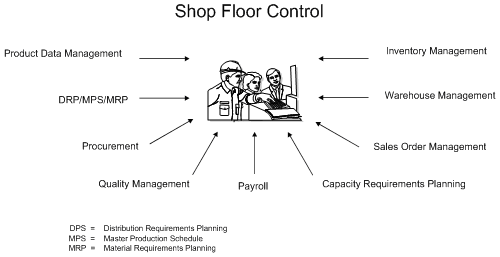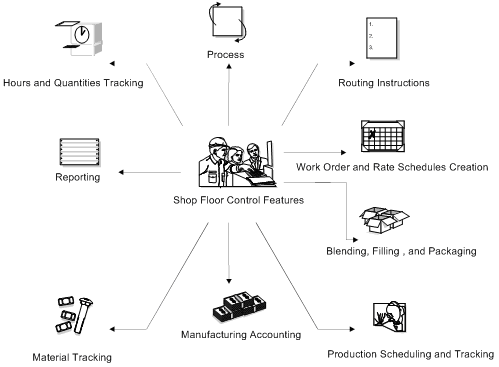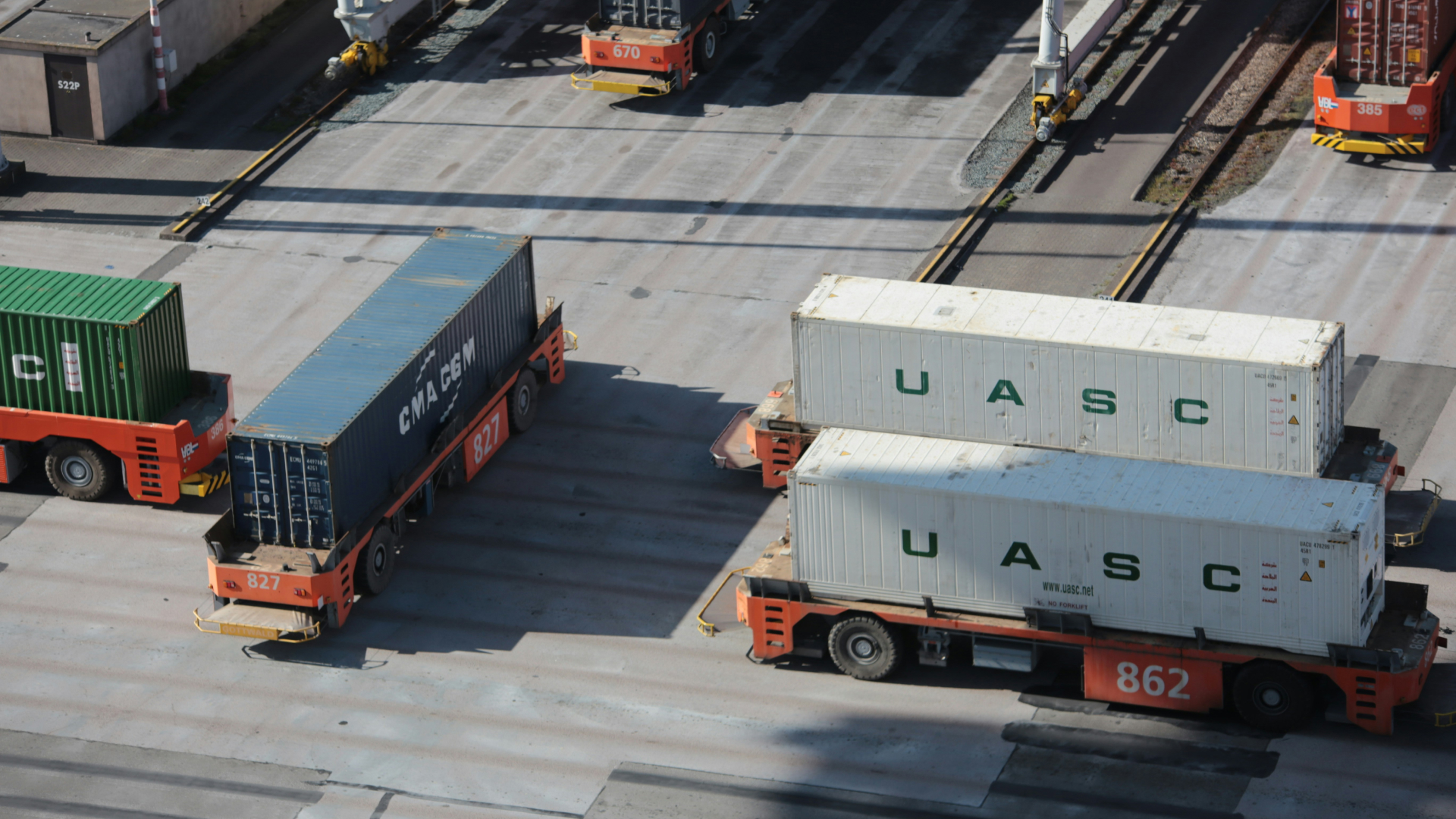Integrating ERP, shop floor control, and supply chain management software is crucial for modern warehousing. By ensuring data quality, governance, and real-time processing, warehouses can optimize operations, improve decision-making, and stay competitive in today’s data-driven environment.
Introduction
The warehousing industry is evolving rapidly, driven by the need for efficiency, speed, and accuracy. A key enabler of this transformation is the seamless integration of ERP (Enterprise Resource Planning) systems with shop floor control and supply chain management software. This integration helps companies streamline operations, improve decision-making, and gain real-time visibility across the supply chain. However, achieving this level of connectivity requires sophisticated data integration techniques to manage the complexity and variety of data flows.
Let’s explore how warehousing companies can connect ERP systems with shop floor control and supply chain management software through advanced data integration strategies. We will cover critical concepts such as ETL (Extract, Transform, Load), data warehousing, data pipelines, and more. We’ll also discuss the importance of data quality, governance, and real-time processing to ensure efficient and accurate operations.
The Role of ERP in Warehousing
ERP systems are the backbone of warehouse operations, integrating various business functions such as inventory management, procurement, finance, and human resources into a unified system. In warehousing, ERP provides critical insights into inventory levels, labor productivity, and order fulfillment. However, while ERP systems offer a broad view of business operations, they often lack the granularity required for real-time decision-making on the shop floor. This is where shop floor control systems come into play, offering real-time data on machine performance, labor allocation, and production schedules. Integrating these systems with ERP can bridge the gap between high-level business management and on-the-ground operational control, creating a more cohesive and efficient workflow.
Shop floor control is a set of software and tools that manages production orders, tracks progress, optimizes resource usage, mitigates risks, and enhances efficiency through real-time data monitoring and automation.

Product Data Management
The Inventory Management
Sales Order Management
Capacity Requirements Planning
Payroll
Procurement
DRP/MPS/MPR
Warehouse Management

The Need for Supply Chain Management Integration
In addition to shop floor control, supply chain management software plays a critical role in warehousing. Effective supply chain management is essential for ensuring that materials and products are delivered on time, reducing delays, and optimizing costs. By integrating ERP with supply chain management software, warehouses can better coordinate procurement, transportation, and order fulfillment. This integration allows real-time data sharing between ERP and supply chain systems, enabling a more responsive and agile supply chain. However, achieving this level of connectivity is not simple. It requires robust data integration technologies to manage data from multiple sources and ensure it is accurate, consistent, and up-to-date.
Data Integration: The Foundation of Modern Warehousing
The key to successfully connecting ERP, shop floor control, and supply chain management systems lies in data integration. In modern warehousing, data flows from various sources, including sensors, machines, employees, and third-party suppliers. These data points must be integrated into a unified system to enable comprehensive decision-making and automation.
ETL (Extract, Transform, Load)
ETL (Extract, Transform, Load) is a foundational process in data integration. In warehousing, ETL extracts data from various operational systems (such as ERP, shop floor control, and supply chain management software), transforms it into a standardized format, and loads it into a central data warehouse or data lake. This ensures that all data is cleaned, formatted, and enriched before being used for analysis or decision-making. ETL processes can be batch-based, running at scheduled intervals, or real-time, depending on the needs of the warehouse. The key is to ensure that the data being integrated is accurate, timely, and in the right format for use across various systems.
Data Warehousing and Data Lakes
Data warehousing plays a crucial role in managing large volumes of data generated by warehousing operations. A data warehouse serves as a central repository where historical data is stored for reporting and analysis. It allows businesses to generate insights into long-term trends, helping to optimize processes over time.
Data lakes, on the other hand, are more flexible and can store both structured and unstructured data, making them ideal for handling diverse data sources. They provide a scalable and cost-effective way to store raw data until it is needed. The choice between a data warehouse and a data lake depends on the specific requirements of the warehousing operation. Some organizations may even employ both, using data lakes for raw data storage and data warehouses for refined, structured data.
Data Pipelines and Data Mapping
Data pipelines are automated workflows that move data from one system to another. In warehousing, data pipelines ensure that information flows seamlessly between ERP, shop floor control, and supply chain management systems. These pipelines may handle various types of data integration processes, including ETL, real-time processing, and data replication. Data mapping is an essential part of building effective data pipelines. It involves defining how data from one system corresponds to data in another system. For example, data from a shop floor control system may need to be mapped to specific fields in an ERP system. Proper data mapping ensures that data is transferred accurately between systems, minimizing errors and discrepancies.
Real-Time Processing vs. Batch Processing
In warehousing, data can be processed either in real-time or in batches. Batch processing is a traditional method where data is collected, processed, and integrated at scheduled intervals. This approach is useful for reporting and historical analysis but lacks the responsiveness required for real-time decision-making. Real-time processing, on the other hand, allows warehouses to respond to events as they happen. For example, if a machine on the shop floor fails, real-time data integration can trigger immediate alerts in the ERP system, enabling quick action to minimize downtime. Real-time processing is becoming increasingly critical in warehousing as businesses strive for greater agility and responsiveness.
Data Quality and Enrichment
High-quality data is essential for effective decision-making in warehousing. Poor data quality can lead to inaccurate inventory counts, delayed orders, and suboptimal resource allocation. Ensuring data quality involves cleansing data to remove errors, duplicates, and inconsistencies. Data enrichment can further enhance data quality by adding valuable context or additional attributes to the raw data. For example, integrating external data sources such as weather forecasts or traffic reports into a warehouse’s supply chain management system can improve logistics planning. By enriching internal data with external insights, warehouses can make more informed decisions and improve overall operational efficiency.

Master Data Management (MDM)
Master Data Management (MDM) is a critical component of data governance in warehousing. MDM ensures that key data entities, such as product details, customer information, and supplier data, are consistent and accurate across all systems. In a warehousing environment, where multiple systems interact, maintaining consistent master data is essential for efficient operations. For example, discrepancies in product data between an ERP system and a shop floor control system can lead to production errors or delays. MDM ensures that all systems are aligned, reducing the risk of errors and ensuring smooth operations across the warehouse.
Data Governance and Compliance
In today’s regulatory environment, data governance and compliance are more important than ever. Warehousing companies must ensure that their data is not only accurate but also secure and compliant with industry regulations. Data governance refers to the policies and procedures that govern how data is managed, used, and protected. For example, warehouses may be required to comply with regulations such as GDPR or HIPAA, depending on the nature of the data they handle. Effective data governance ensures that data is stored, processed, and shared in a way that meets legal requirements and protects sensitive information.
Data Replication and Synchronization
Data replication involves copying data from one system to another, ensuring that both systems have consistent and up-to-date information. In warehousing, data replication is often used to keep ERP and shop floor control systems synchronized. This ensures that any changes made in one system are immediately reflected in the other, reducing the risk of data discrepancies. For example, if an inventory count is updated in the ERP system, that change must be replicated in the shop floor control system to ensure that production schedules are accurate. Data synchronization ensures that all systems are working with the same information, minimizing errors and improving operational efficiency.
Change Data Capture (CDC)
Change Data Capture (CDC) is a technique used to track and capture changes made to data in real-time. In warehousing, CDC can be used to monitor updates in ERP, shop floor control, and supply chain management systems. By capturing changes as they occur, CDC enables real-time data synchronization and helps maintain data consistency across all systems. For example, if a new purchase order is entered into the ERP system, CDC can capture that change and update the relevant supply chain management system in real-time, ensuring that procurement processes are aligned with the latest data.
API-Based Integration
API-based integration is one of the most common methods used to connect ERP, shop floor control, and supply chain management systems in the warehousing industry. APIs (Application Programming Interfaces) enable different software applications to communicate and share data in real-time. API-based integration allows for more flexible and dynamic connections between systems, enabling real-time data sharing and synchronization. For example, an API can be used to automatically transfer data from a shop floor control system to an ERP system, ensuring that production data is immediately available for decision-making.
Cloud-Based Data Integration
As warehouses increasingly move toward digital transformation, cloud-based data integration, such as provided by the InitusIO integration solution, is becoming a popular choice. Cloud-based integration platforms offer scalability, flexibility, and cost-efficiency, making them ideal for warehousing operations with fluctuating data volumes and integration needs. Cloud-based integration allows warehouses to connect their ERP, shop floor control, and supply chain management systems without the need for expensive on-premise infrastructure. It also enables easy scaling as data volumes grow, ensuring that the integration solution can handle the increasing complexity of modern warehousing operations.
Data Virtualization and Data Federation
Data virtualization and data federation are advanced data integration techniques that enable real-time access to data from multiple sources without the need for physical data replication. In warehousing, these techniques can be used to create a unified view of data from ERP, shop floor control, and supply chain management systems. Data virtualization allows users to query and analyze data from different systems in real-time, without having to move or replicate the data. This enables more agile and flexible decision-making, as users can access the data they need without waiting for traditional ETL processes to complete. Data federation works similarly but focuses on creating a unified view by aggregating data from multiple sources into a virtual database.

The Future of Data Integration in Warehousing
As warehousing operations continue to evolve, the need for robust data integration will only increase. Emerging technologies such as artificial intelligence (AI), machine learning, and the Internet of Things (IoT) will generate even more data, creating new opportunities and challenges for data integration. For example, IoT sensors on the shop floor can provide real-time data on machine performance, inventory levels, and employee productivity. Integrating this data with ERP and supply chain management systems will enable warehouses to make more informed decisions and optimize their operations. AI and machine learning algorithms can be used to analyze data from multiple sources and identify patterns or anomalies. This can help warehouses predict demand, optimize inventory, and improve overall efficiency. However, the success of these technologies will depend on the quality and integration of the underlying data.
Integrating ERP systems with shop floor control and supply chain management software is essential for modern warehousing operations. By leveraging advanced data integration techniques such as ETL, data pipelines, and API-based integration, warehouses can ensure that their systems work together seamlessly, enabling real-time decision-making and improving operational efficiency. As the industry continues to evolve, data quality, governance, and real-time processing will play a critical role in driving innovation and growth. By investing in the right data integration technologies, warehouses can stay competitive and meet the challenges of an increasingly complex and data-driven world.
We know that every organization faces unique challenges and opportunities. At Initus, we understand that a one-size-fits-all approach to integrations doesn’t work. That’s why our team creates software integrations that can support AI-based solutions to address the specific needs of any sector.
Adaptability + Experience + Strategic Methodology. If you have an operational improvement challenge you want to overcome, contact us today.




